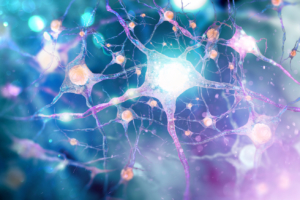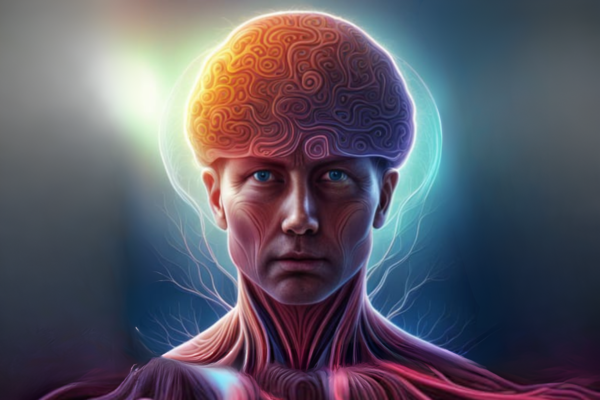
To treat their patients, a number of therapists are turning to psychedelics. But what is psychedelic-assisted therapy and how does it work?
Therapists do not simply hand over a bowl of psilocybin mushrooms to their patients and wait for them to work their magic. To say that it is ‘just’ the drugs that are having an effect is a misconception. Rather, therapists employ psychedelic-assisted therapy, a multifaceted therapeutic tool, comprising three main stages that work synergistically to deliver a powerful way to change the mind.

What is Psychedelic-Assisted Therapy? A Brief History
Psychedelic-assisted therapy entails using a high dose of a psychedelic substance to treat a mental health issue. In the Western world, psychedelic-assisted therapy made an indelible imprint in the field of psychiatry in the ’50s and ’60s. The discovery of LSD by Albert Hoffman in 1938 propelled psychedelic substances to become readily accessible in the West.
The profound effects of LSD quickly became apparent to others, and the synthesis of the substance was relatively easy. So, in 1949, Sandoz Laboratories (the company that Hoffman was working for at the time) marketed LSD as Delysid to Universities and institutions, to test it out for its clinical applications.
What ensued was a flurry of research into the effects of psychedelics; from 1950 to 1965, some 40,000 patients were treated with LSD, with overwhelmingly positive results. Despite these groundbreaking results, psychedelics gained a notorious reputation as the instigator of anti-government sentiment. This led to the infamous convention on psychotropic substances in 1971, ultimately ending in a blanket ban on psychoactive drugs.
From 1971, the rapid pace of psychedelic research quickly ground to a halt. This stagnant period lasted for several decades even as much of the findings from this era were truly groundbreaking. It was undeniable that psychedelics could be used to treat a myriad of mental health issues such as end-of-life anxiety and addiction.
Though it wasn’t just psychedelic substances that facilitated these positive changes in the mind; the three stages of psychedelic-assisted therapy combined to form this innovative treatment.

Stage 1: Preparation
Taking a high dose of psychedelics is an undoubtedly daunting process. ‘Bad’ trips are common on a psychedelic journey as one never knows what the mind may reveal to itself. This can be especially anxiety-inducing when a patient is going to trip for the first time. Mental health issues can easily exacerbate the already present anxiety that occurs in anticipation.
To mitigate this anxiety, clinicians and psychedelic facilitators always run preparatory sessions prior to the psychedelic experience itself. Rosalind Watts, clinical lead of the psilocybin for depression trials at Imperial College London, highlights that preparing patients can have extremely positive benefits: “Preparation is essential to help people approach the psychedelic experience with as little resistance as possible, as letting go fully allows the most benefit.”
Another element of preparation is intention-setting. An example of an intention may be to “live more freely, and feel less inhibited”, or to “open myself up to others”. Intention-setting is a fundamental aspect of psychedelic therapy; having a sharp and focused intention allows a patient to remain grounded during turbulent periods of the psychedelic session. Research has also shown that having “clear intentions” for a session may predict mystical-type experiences during the psychedelic experience, which have themselves been strongly associated with positive changes in mental health.

Stage 2: The Psychedelic Session
The day of the psychedelic session is what people classically envision when thinking about psychedelic therapy—this is when the substance itself is administered.
The day usually starts with slightly more preparation, and a re-clarification of the intentions to take into the trip. In clinical settings, a psychedelic is usually administered in a comfortable and safe space, with one or two therapists that act as guides for the trip. An area in a hospital or retreat center will often be turned into a ‘living-room’ setting, with rugs and comfy furniture adorning the room.
After taking a dose of psychedelics, the patient is encouraged to sit back, relax, and open themselves up to the unfolding nature of the experience. Eyeshades are provided, and a curated playlist of music also accompanies the psychedelic passenger.

Stage 3: Integration
The psychedelic session itself only lasts around six hours, but the work doesn’t end there. The experience that unfolds is often dynamic, with many stages that encompass it. Initially, patients may feel overwhelmed, which is why it’s hugely important to include an integration phase.
According to Watts, “Integration helps patients process the events that occur during psychedelic sessions, learn valuable lessons from them, and incorporate key lessons into their daily life.” The therapist and patient will spend several hours discussing what the psychedelic experience was like. During this, the therapist teases out specific insights that the patient may have gained from the experience.
This process is particularly important, as it then allows patients to integrate these insights into their wider life. For example, a patient may have had an insight that they can’t form strong relationships with others because they appear cold and closed. The therapist can then use this insight to encourage the patient to be more open-hearted in their relationships, thus allowing the patient to develop better and stronger relationships.
It’s impossible to say what the most important aspect of psychedelic therapy is. If you took away the preparation sessions, then a patient may have a particularly challenging experience during the dosing session. If you took away the integration sessions, a patient may miss out on key insights that can help them lead a happier and healthier life. And, of course, if you took away the psychedelic session itself, then there may not be a window of opportunity to change a patients’ mind for the better.





